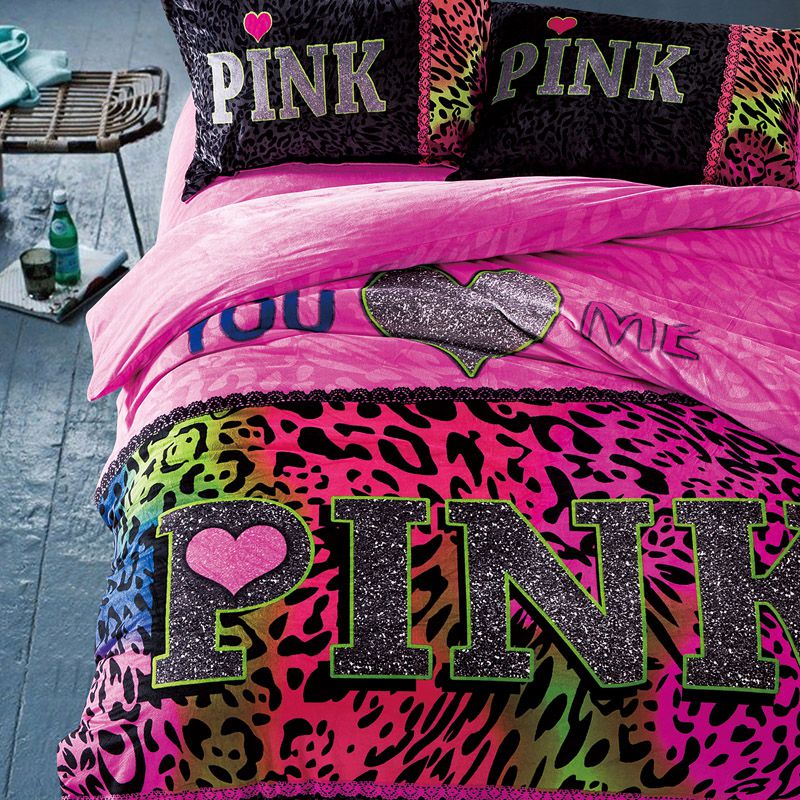
The brand was launched strategically, to increase and preserve future Victoria's Secret customers (i.e, ages 21+) and market share by building an expanded pipeline of customers whose brand awareness and loyalty are established and cemented up to 10 years earlier, as tweens and teens. The PINK brand sells underwear, swimsuits, sleepwear, loungewear, beauty products, and accessories. The company often placed its stores side-by-side with Victoria's Secret stores.
#Victoria secret pink full
The product first appeared in late 2003 in select stores, with a full chain-wide roll out in July 2004. While originally aimed at "tween" girls ages 10–12, the brand would eventually state its official target demographic is teen girls and college-age women. “They are going to have to some decisive steps to differentiate themselves,” said Gildenberg.On October 16, 2002, Victoria's Secret announced the launch of PINK, a new sub-brand and product line. It’s also is including a more diverse array of models on its website, according to Ramirez.īut by the nature of its stores being attached to Victoria’s Secret’s stores, it remains very difficult for Pink to create its own brand identity. The brand has a college ambassador program, where shoppers can apply to receive access to exclusive discounts and notifications of events happening near their campus. Pink has tried to create other programming and marketing efforts to reach its target college-age shopper who doesn’t want to visit Victoria’s Secret anymore. “My guess is that might have been a little late to that party.”Īlthough the athleisure market is growing, it’s a crowded category: Pink now also has to compete with Nike, Lululemon and Athleta, in addition to Aerie and lingerie startups. “The shift in the women’s bra category towards performance wear, and towards athletic wear, has been enormous - and probably one of the five or six biggest category shifts in American retail,” said Bryan Gildenberg, chief knowledge officer at Kantar Consulting. Pink CEO Amy Hauk said during L Brand’s investor day in September that Pink is investing more in athleticwear, and she believes athleticwear can become a $1 billion business for Pink by 2022. But younger shoppers have now started to favor athleisure over more casual loungewear, according to Ramirez, which hurt Pink in the short term. In addition to selling cheap bras and underwear in a variety of colors, Pink was known in the early to mid 2000s for its branded sweatsuits.

Today, Victoria’s Secret has 957 stores in the U.S. In order to encourage the Pink shopper to explore Victoria’s Secret, the company literally placed the two side-by-side in their own branded storefronts.

The hope with Pink was that its teenage and young adult customers, would gain a stronger affinity to Victoria’s Secret brand early on, and then graduate on to become core shoppers of Victoria’s Secret. “I do think Victoria’s Secret’s business does taint Pink, and I think it was only a matter of time for that to catch up,” said Jessica Ramirez, retail research analyst at Jane Hali & Associates. But given that it’s still being marketed closely as a brand by Victoria’s Secret, it has still proven difficult for Pink to attract customers who are turned off by Victoria’s emphasis on sexiness. “Pink was able to stay on trend a lot more closely than core ,” a former Victoria’s Secret employee said.Īnalysts say that Pink has done a better job of revamping its marketing to emphasis inclusivity, selling products for a wide variety of body types than Victoria’s Secret has, and revamping its merchandising assortment to lean into new popular product trends like wellness and athleisure. While one big focus for any new CEO will be getting Victoria’s Secret to return to sales growth, he or she will also have to revamp the brand in a way that encourages customers of the Pink brand to shop with Victoria’s Secret as they get older. This week, the Wall Street Journal reported that L Brands CEO Les Wexner is looking at stepping down, and selling off Victoria’s Secret, as some activist investor groups are pushing for board changes to bring in more diverse directors. During its third quarter earnings in November, Victoria’s secret reported that same-store sales declined 8% year-over-year. At the very least, any growth at Pink isn’t enough to offset sales declines at Victoria’s Secret.


 0 kommentar(er)
0 kommentar(er)
